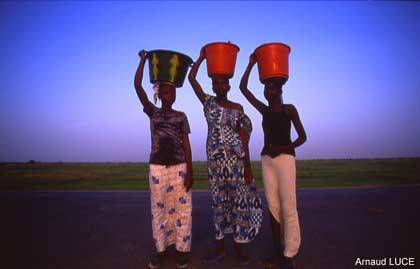The recent spike in oil prices has revived interest in exploration off the Senegal's coast. Here's a good overview of past exploration activities:
In the last 48 years, more than 144 hydrocarbon exploration wells have been drilled in Senegalese territory. At least 49 of these drilled offshore, with 23 of these being located in the Casamance Offshore. The other area of interest that has been drilled is onshore in the vicinity of the Cape Vert Peninsula. The rest of the Senegal Basin outside these areas remains under-explored.
In addition, modern analysis indicates that many of the boreholes drilled, particularly those based on seismic information acquired before 1962, were poorly located in prospects and many were limited to exploration of the Tertiary to Senonian intervals.
The upstream oil industry is becoming increasingly important to the Senegalese economy. In 1981, PETROSEN, the national oil company, was created by the government of Senegal and is responsible for all hydrocarbon exploration activities.
During the 1950s petroleum prospecting started and in the 1960s and 1970s a number of small fields were discovered, but found uneconomical not exploited. In the late 1970s, offshore exploration started again and a field of heavy crude oil of 1 billion barrels was discovered. So far only one gas field (Diam Niadio 14) has been discovered. The gas is exported by pipeline to the Societe Nationale d'Electricite for its gas power stations. Current gas reserves are estimated to be 3 billion cubic metres. According to the US Department of Energy, Senegal produced and consumed 1.4 billion barrels of dry gas.
The offshore border area containing the Dome Flore and Gea fields became the subject of dispute between Senegal and Guinea-Bissau. In 1993, the Agence de Gestion et de Cooperation entre la Guinea-Bissau et le Senegal (AGC) was established as a joint commission to oversee oil and gas exploration and fishing in the disputed area between the Senegal and Guinea-Bissau.
In July 2004 Hunt Oil Company, through its wholly owned subsidiary Senegal Hunt Oil Company, signed an agreement with Petrosen (Petroleum Company of Senegal), giving Hunt the exclusive right to carry out petroleum exploration and production operations in Sangomar-Rufisque Offshore Area of Senegal (approximately 3,701,805 square acres).
Energy Africa acquired the St. Louis exploration licence with Petrosen in late 2003. Tullow operates the licence with a 60 percent interest. Dana acquired a 30 percent interest from Tullow in the fourth quarter of 2004. Petrosen holds the remaining 10 percent.
In March 2005 Sterling signed a farm-out deal with Markmore Energy (L) Ltd, a private oil and gas company wholly owned by investor Tan Sri Halim Saad for the Dome Flore offshore petroleum license held by Sterling. The Dome Flore block offshore Senegal and Guinea Bissau, contains an estimated 800 million barrels of heavy oil in place. The discoveries lie in 50 metres of water, approximately 70 km offshore.
Sunday, April 19, 2009
Offshore oil exploration not the first time for Senegal
Labels:
exploration,
offshore,
oil,
Petrosen,
renewable energy,
Senegal
Subscribe to:
Post Comments (Atom)



No comments:
Post a Comment